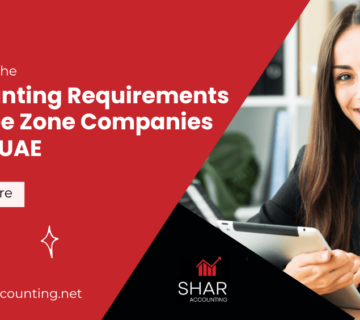Apparently, In the UAE, VAT is 5%. New cars attract 5% VAT on the full selling price. Anyhow, eligible used-car dealers may apply the profit-margin scheme, which charges VAT only on the margin (sell minus buy), not on the full price. Because of which , buyers should read the tax invoice carefully, and dealers should choose the correct VAT method to protect both compliance and margins.
Table of Contents
VAT basics for car transactions in the UAE
Let’s set the ground rules first.
- VAT rate: 5%.
- Taxable person: Any business registered or required to register for VAT.
- Supply: A sale, deemed sale, or a service related to the car.
- Invoice: A valid tax invoice is mandatory for VATable supplies.
Although the rate looks simple, valuation differs by scenario. Consequently, choosing the wrong method can quietly destroy margin or trigger FTA penalties. Get details on Car Dealers Accounting & Back Office Support in UAE.
New cars: always straightforward 5%
When you buy a new car from a registered dealer, VAT applies on the full selling price (after any dealer discount, before registration or insurance paid to third parties). Buyers should confirm:
- The invoice shows supplier TRN, VAT amount, and net + VAT = total.
- Any admin fees or delivery charges are also VATable.
- Registration fees collected as an agent may sit out of scope if shown correctly.
Dealers: keep your input tax on demonstrators, accessories, and showroom expenses clean. You recover it through your VAT return, provided you hold valid tax invoices and the costs relate to taxable supplies.
Used cars: normal VAT vs the profit-margin scheme
Here is where most confusion begins.
Option A — Normal VAT (Standard Rated)
You charge 5% on the full selling price. You may also recover input VAT on costs, where applicable.
When it fits:
- You bought the car with VAT from a VAT-registered supplier who issued a tax invoice.
- You trade mostly B2B and your buyers want input tax on the purchase.
Option B — Profit-Margin Scheme (PMS)
You charge 5% on your margin only, not on the full price. The margin = selling price − purchase price (excluding VAT). You cannot show VAT as a separate line to the buyer. Instead, VAT is embedded in the price you charge.
When it fits:
- You acquired the car without VAT (e.g., from an unregistered private individual) or from another margin scheme dealer.
- You sell mainly B2C and want sharper pricing in a competitive lot.
Key guardrails:
- Keep stock books that track unit purchase price, unit selling price, and calculated margin.
- You cannot claim input VAT on the vehicle itself when the scheme applies.
- You must still issue a margin scheme invoice, even though VAT is not itemized.
Example (margin scheme):
- Buy price: AED forty thousand from a private seller.
- Sell price: AED fifty thousand.
- Margin: AED ten thousand.
- VAT due: AED ten thousand × five percent = AED five hundred.
- Cash in: AED fifty thousand. VAT you remit: AED 500. Your pre-VAT gross: AED 9,500.
Trade-ins: two linked transactions, not one
Trade-ins confuse both bookkeepers and buyers . Apparently,treat them as two separate deals:
- Dealer purchases the used vehicle from the customer.
- Dealer sells another vehicle to the same customer.
Because they are distinct, calculate VAT on the selling price of the outgoing car using the chosen method (normal VAT or margin scheme). Meanwhile, record the purchase of the trade-in at its fair buy price. Therefore, your paperwork stays clean, and your VAT base remains correct.
Tip: show a clear allowance for the trade-in on the sales invoice. Then mirror the purchase on a separate buy invoice to the customer.
Exports and tourists: what changes?
- Direct export outside the GCC: You may apply zero-rating if you meet export evidence and timing conditions. Keep customs docs, export bills, and proof of departure.
- Supply to GCC residents inside the UAE: Treat as standard-rated unless you meet very specific rules.
- Tourist refund scheme: It generally applies to eligible goods. However, motor vehicles are typically excluded. Always verify current eligibility.
Dealers must document how,where, and who, during the car leaves the UAE. Without airtight evidence, the FTA expects five percent VAT.
Extended warranties, service contracts, and add-ons
Most detailing,delivery,admin fees,service plans, or warranties, are VATable at 5% when the dealer supplies them. If a third party invoices the customer directly, the VAT position follows that supplier’s treatment. Therefore, align contracts and invoices before you promise “VAT-inclusive” bundles.
Financing note: banks may charge standard-rated fees tied to the credit arrangement. Buyers should read KFS disclosures and see how VAT affects the effective cost.
Common mistakes that cost real money
- Using the margin scheme when you bought the car with recoverable VAT.
- Showing VAT separately on a margin-scheme invoice.
- Poor stock records that fail to tie a unit’s buy price to its sell price.
- Wrong treatment of trade-ins, which distorts VAT and gross profit.
- Zero-rating exports without meeting documentary evidence timelines.
- Bundling services without clarity on VAT for each item.
Each mistake invites assessments, penalties, and margin leaks. Sharp Accounting fixes these with clean mapping, unit-level schedules, and FTA-ready evidence.
How buyers can protect themselves
- Ask for a valid tax invoice. Confirm the TRN, VAT amount (or note “margin scheme” if used), and the VIN.
- Compare VAT-inclusive totals across dealers, not just “price before VAT.”
- Verify what fees the price includes:delivery,registration service plan,warranty,
- For exports, request the dealer’s document checklist upfront.
Because clarity saves time and money, this checklist prevents billing surprises and resale headaches.
How dealers can boost compliance and margin
- Decide once per unit: normal VAT or margin scheme. Then document it.
- Keep a margin register with VIN, buy price, sell price, and VAT computed on the margin.
- Reconcile input tax on reconditioning parts and labor when normal VAT applies.
- Separate agency disbursements (e.g., registration) from your VATable fees.
- Train sales and accounts to issue credit notes correctly on cancellations or price changes.
- Close months with unit schedules, bank and floorplan reconciliations, and VAT tie-outs.
Sharp Accounting builds these controls so managers see true GPU and true VAT per VIN.
Related Articles:
» Accounting & Bookkeeping Service in Sharjah
» Accounting & Bookkeeping Service in Dubai
» Accounting & Bookkeeping Service in Ajman
» Restaurant Accounting Service in Ajman
» Restaurant Accounting Service in Sharjah
» Restaurant Accounting Service in Dubai
Summary
VAT affects car sales in the UAE in several ways. New cars carry 5% VAT on the full price. Used-car dealers may apply either normal VAT or the profit-margin scheme, depending on how they acquired the vehicle. Moreover, trade-ins are two transactions, exports can be zero-rated with the right evidence, and warranties or fees usually attract 5% VAT. Therefore, buyers should check the tax invoice details, and dealers should maintain VIN-level stock and VAT records to protect both compliance and profit. In addition, Sharp Accounting helps you set the correct method per unit, pass audits and reconcile inputs, confidently.
FAQs: VAT on Car Sales in the UAE
5% on taxable supplies, with special rules for used cars.
No. Usually, dealers use the profit-margin scheme when rules are met.
No. Margin invoices do not show recoverable VAT.
Normally, treat as two transactions: dealer buys the trade-in, then sells the other car.
They can be, with proper evidence and timing. Keep customs documents.
Yes, typically 5%, unless a specific exemption applies.
VAT, taxable amount, VIN, customer details, invoice date, Supplier TRN, and total.
We set unit-level VAT mapping, margin registers, reconciliations, and FTA-ready audit trails.







